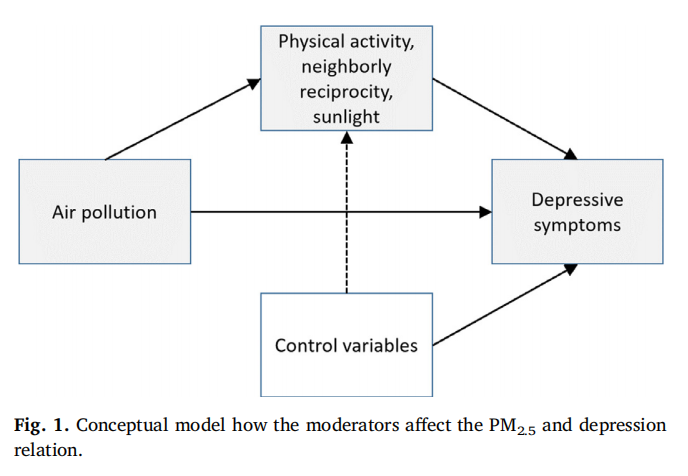ABSTRAT
Background: Although numerous studies have speculated about the direct and indirect linkage between longterm air pollution (i.e., PM2.5) concentrations and mental health in developed countries, evidence for developing countries is limited. Our aim was to examine the mediation effects of sunlight, physical activity, and neighborly reciprocity on the association between air pollution and depression. Methods: In a sample of 20,861 individuals in China in 2016, depression was measured using the Center for Epidemiological Studies Depression screener (CES-D) and linked to annual city-wide PM2.5 data. We used multilevel regression models to assess the associations between depressive symptoms and PM2.5 and tested the mediation of sunlight, physical activity, and neighborly reciprocity in this association. Propensity score matching was used to evaluate whether selection bias may affect the association between CES-D scores and PM2.5. Results: PM2.5 concentration was positively associated with depression symptoms. All mediators were significantly and negatively associated with PM2.5. Our mediation analyses indicated that physical activity, neighborly reciprocity, and exposure to sunlight are important mechanisms through which PM2.5 affects depressive symptoms. Limitations: The limitations of the present study were the cross-sectional nature of the data and modifiable areal unit problem. Conclusions: Our findings suggest not only that PM2.5 is directly associated with depression, but also that this association seems to be partially mediated by physical activity, neighborly reciprocity, and sunlight.

Q.E.D.









